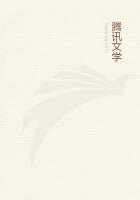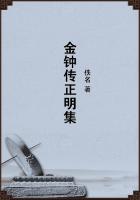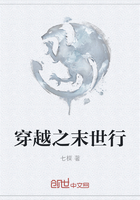About the time of Mark Anthony and Cleopatra, particularly after the battle of Actium, suicide was in great favor in Egypt. In fact a great number of persons formed an academy called The Synapothanoumenes, who had for their object the idea of dying together. In Western Europe, as shown in the ceremonies of the Druids, we find among the Celts a propensity for suicide and an indifference to self-torture. The Gauls were similarly minded, believing in the dogma of immortality and eternal repose. They thought little of bodily cares and ills. In Greece and Rome there was always an apology for suicide and death in the books of the philosophers. "Nil igitur mors est, ad nos neque pertinet hilum;quando quidem natura animi mortalis habetur!" cries Lucretius.
With the advent of Christianity, condemning as it did the barbarous customs of self-mutilation and self-murder, these practices seem to disappear gradually; but stoicism and indifference to pain were exhibited in martyrdom. Toward the middle ages, when fanaticism was at its height and the mental malady of demoniacal possession was prevalent, there was something of a reversion to the old customs. In the East the Juggernaut procession was still in vogue, but this was suppressed by civilized authorities; outside of a few minor customs still prevalent among our own people we must to-day look to the savage tribes for the perpetuation of such practices.
In an excellent article on the evolution of ceremonial institutions Herbert Spencer mentions the Fuegians, Veddahs, Andamanese, Dyaks, Todas, Gonds, Santals, Bodos, and Dhimals, Mishmis, Kamchadales, and Snake Indians, as among people who form societies to practice ****** mutilations in slight forms.
Mutilations in somewhat graver forms, but still in moderation, are practiced by the Tasmanians, Tamaese, the people of New Guinea, Karens, Nagas, Ostiaks, Eskimos, Chinooks, Comanches, and Chippewas. What might be called mixed or compound mutilations are practiced by the New Zealanders, East Africans, Kondes, Kukas, and Calmucks. Among those practising ****** but severe mutilations are the New Caledonians, the Bushmen, and some indigenous Australians. Those tribes having for their customs the practice of compound major mutilations are the Fiji Islanders, Sandwich Islanders, Tahitians, Tongans, Samoans, Javanese, Sumatrans, natives of Malagasy, Hottentots, Damaras, Bechuanas, Kaffirs, the Congo people, the Coast Negroes, Inland Negroes, Dahomeans, Ashantees, Fulahs, Abyssinians, Arabs, and Dakotas.
Spencer has evidently made a most extensive and comprehensive study of this subject, and his paper is a most valuable contribution to the subject. In the preparation of this section we have frequently quoted from it.
The practice of self-bleeding has its origin in other mutilations, although the Aztecs shed human blood in the worship of the sun. The Samoiedes have a custom of drinking the blood of warm animals. Those of the Fijians who were cannibals drank the warm blood of their victims. Among the Amaponda Kaffirs there are horrible accounts of kindred savage customs. Spencer quotes:--"It is usual for the ruling chief on his accession to be washed in the blood of a near relative, generally a brother, who is put to death for the occasion." During a Samoan marriage-ceremony the friends of the bride "took up stones and beat themselves until their heads were bruised and bleeding." In Australia a novitiate at the ceremony of manhood drank a mouthful of blood from the veins of the warrior who was to be his sponsor.
At the death of their kings the Lacedemonians met in large numbers and tore the flesh from their foreheads with pins and needles. It is said that when Odin was near his death he ordered himself to be marked with a spear; and Niort, one of his successors, followed the example of his predecessor. Shakespeare speaks of "such as boast and show their scars." In the olden times it was not uncommon for a noble soldier to make public exhibition of his scars with the greatest pride; in fact, on the battlefield they invited the reception of superficial disfiguring injuries, and to-day some students of the learned universities of Germany seem prouder of the possession of scars received in a duel of honor than in awards for scholastic attainments.
Lichtenstein tells of priests among the Bechuanas who made long cuts from the thigh to the knee of each warrior who slew an enemy in battle. Among some tribes of the Kaffirs a kindred custom was practiced; and among the Damaras, for every wild animal a young man destroyed his father made four incisions on the front of his son's body. Speaking of certain Congo people, Tuckey says that they scar themselves principally with the idea of rendering themselves agreeable to the women of their tribe. Among the Itzaex Indians of Yucatan, a race with particularly handsome features, some are marked with scarred lines, inflicted as signs of courage.
Cosmetic Mutilations.--In modern times there have been individuals expert in removing facial deformities, and by operations of various kinds producing pleasing dimples or other artificial signs of beauty. We have seen an apparatus advertised to be worn on the nose during the night for the purpose of correcting a disagreeable contour of this organ. A medical description of the artificial manufacture of dimples is as follows:--"The modus operandi was to make a puncture in the skin where the dimple was required, which would not be noticed when healed, and, with a very delicate instrument, remove a portion of the muscle. Inflammation was then excited in the skin over the subcutaneous pit, and in a few days the wound, if such it may be called, was healed, and a charming dimple was the result." It is quite possible that some of our modern operators have overstepped the bounds of necessity, and performed unjustifiable plastic operations to satisfy the vanity of their patients.

